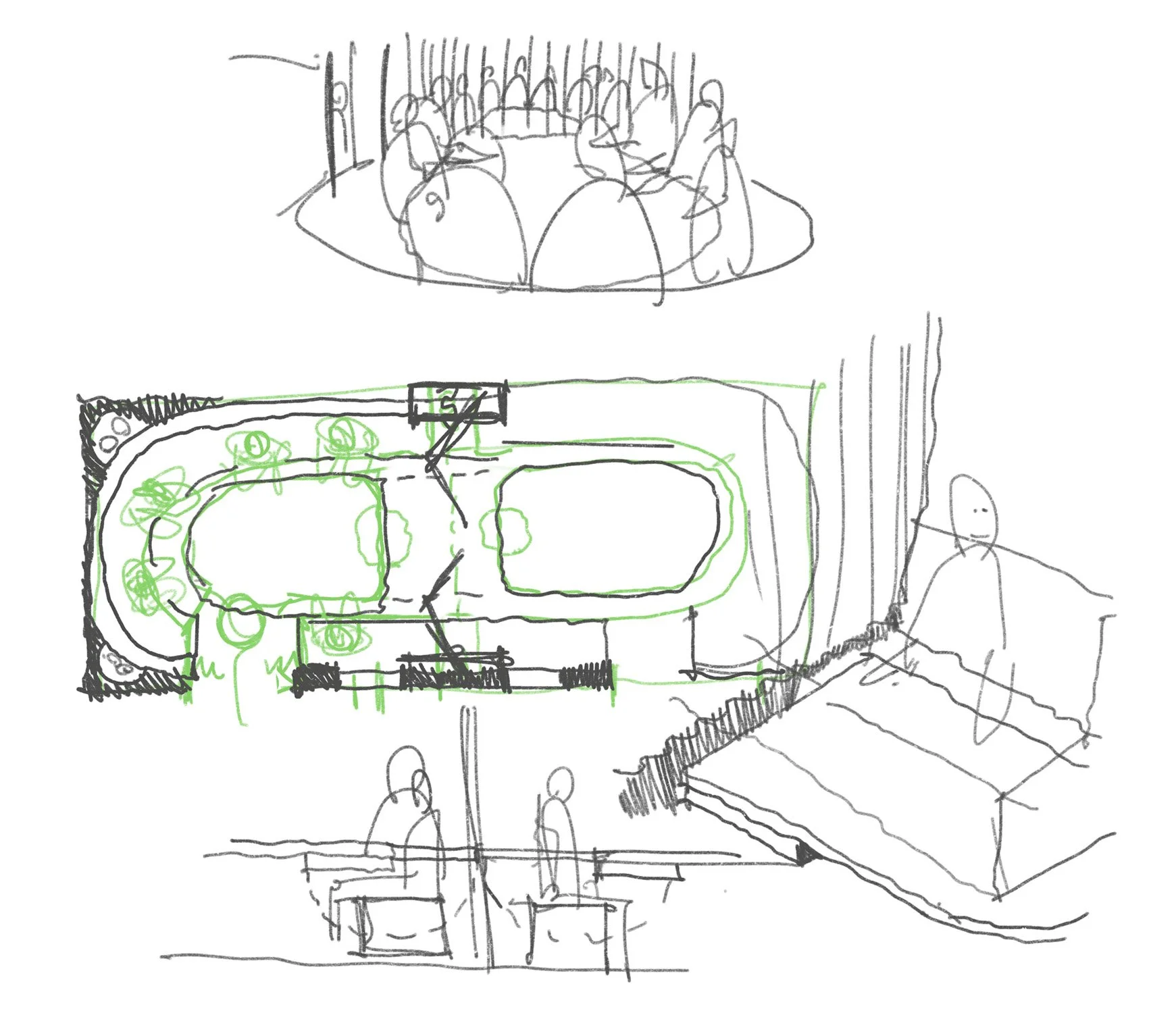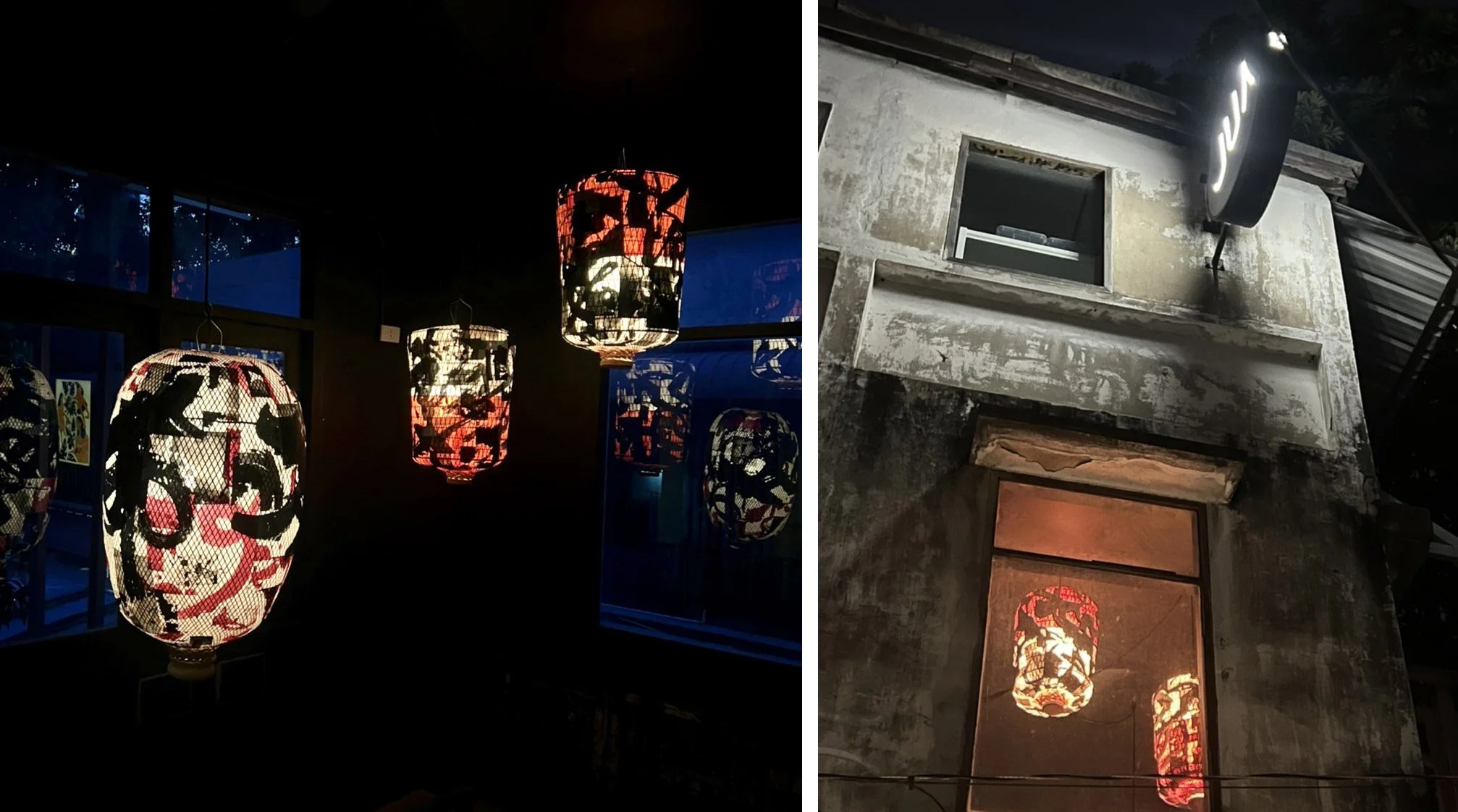KANDO, Phnom Penh
at the TRIBE HOTEL
for NEW ROAD HOSPITALITY and HMD ASIA
2022
From the owners of our favorite Bangkok restaurant, a neo-izakaya in Cambodia. KANDO Phnom Penh is situated in the historic Exchange Square colonial district along the Tonle Sap river, much the way JUA Bangkok is nestled into the old Talad Noi neighborhood along Bangkok’s Chao Phraya river. This location embodies the ethos of the project, which prizes the earthy face to face hospitality one will encounter both along those old town streets or seated for dinner at their bar. Also essential to mindset is the simplicity of design, like that seen at JUA, which we carried forward with the Phnom Penh space.




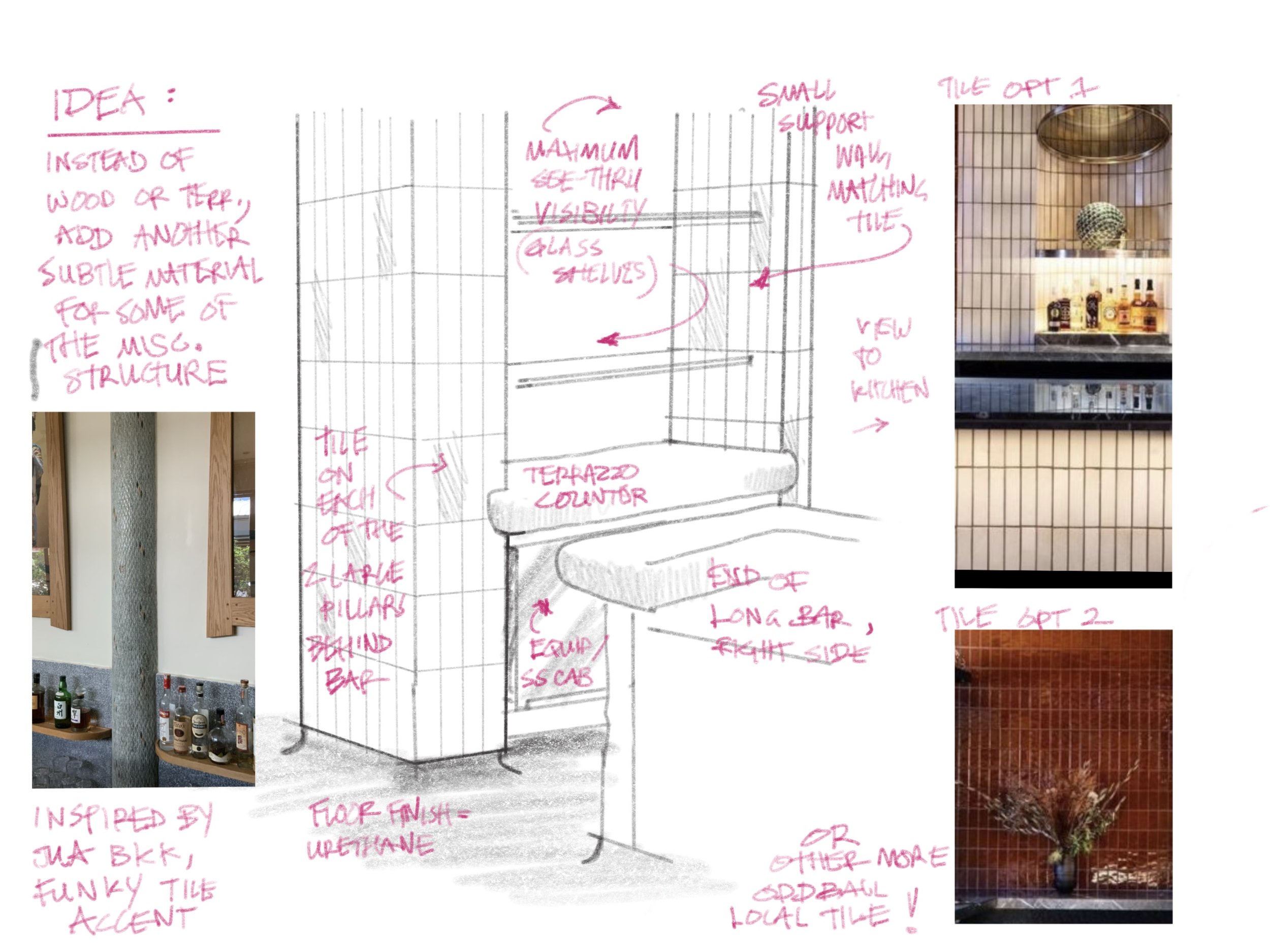
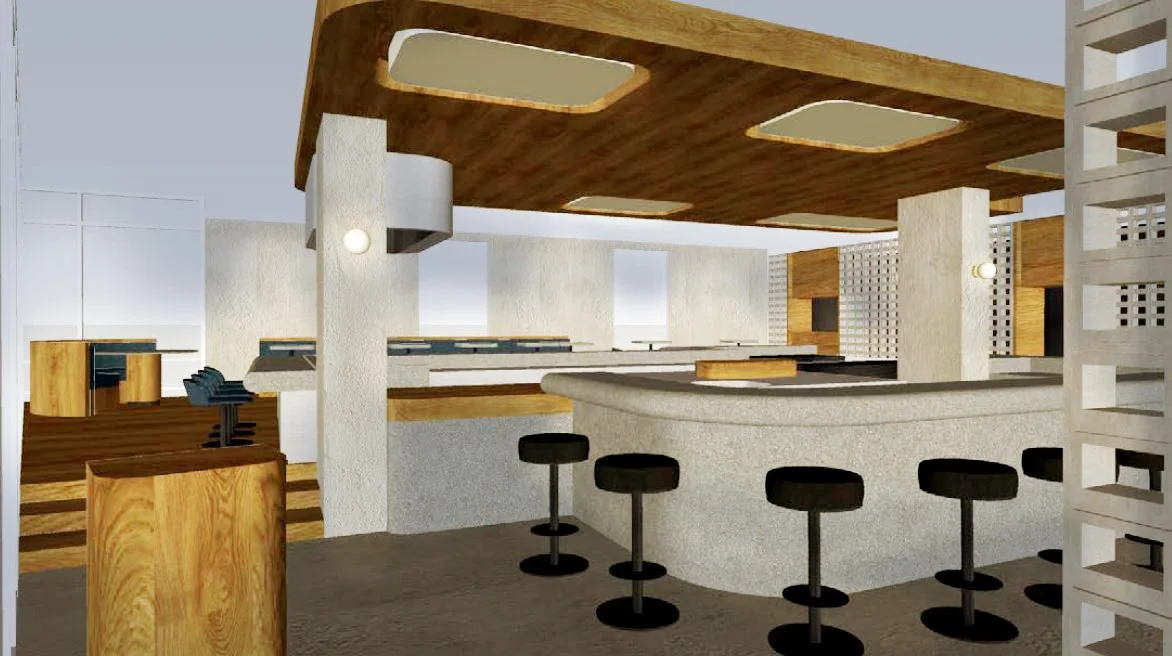
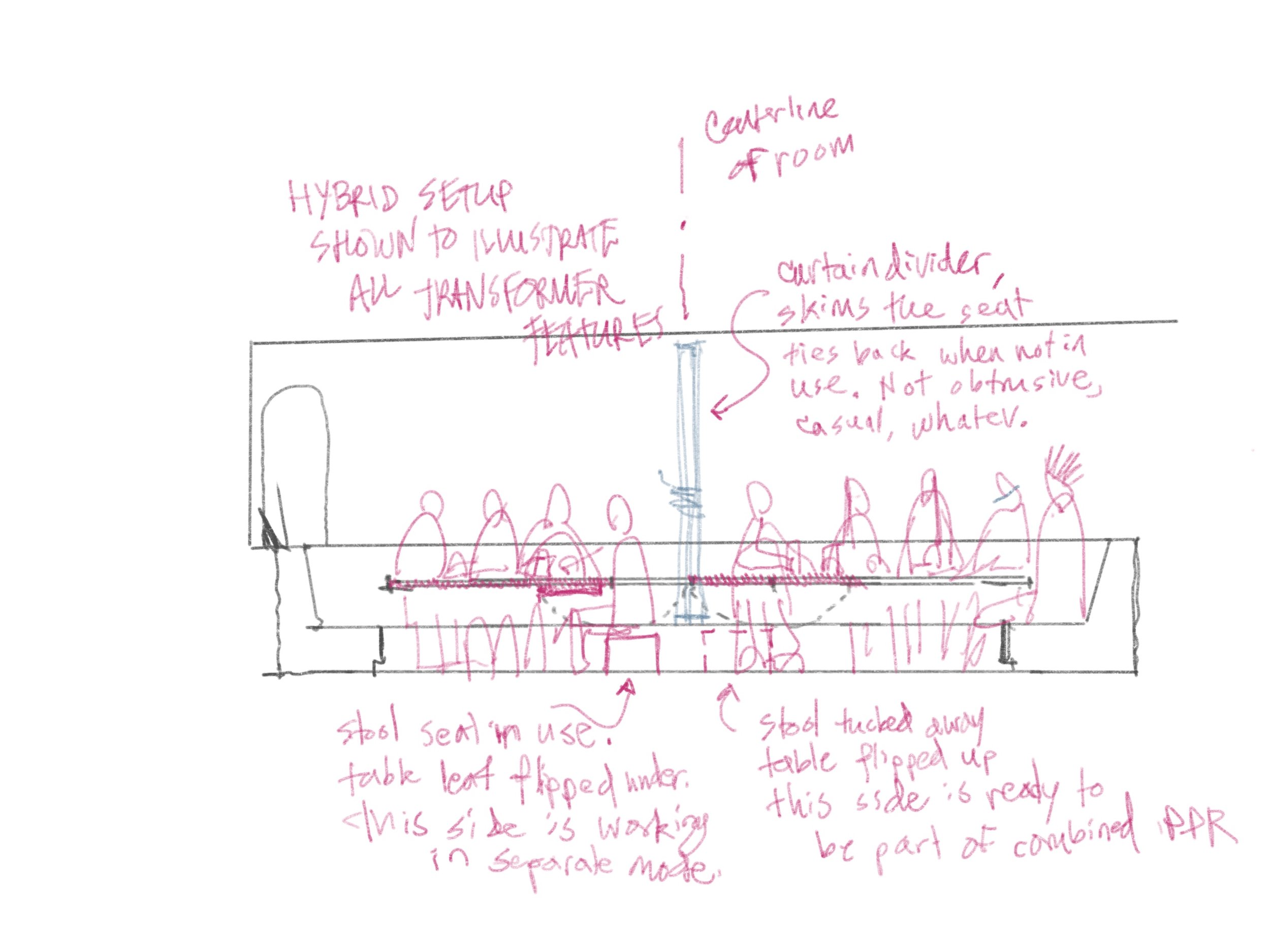

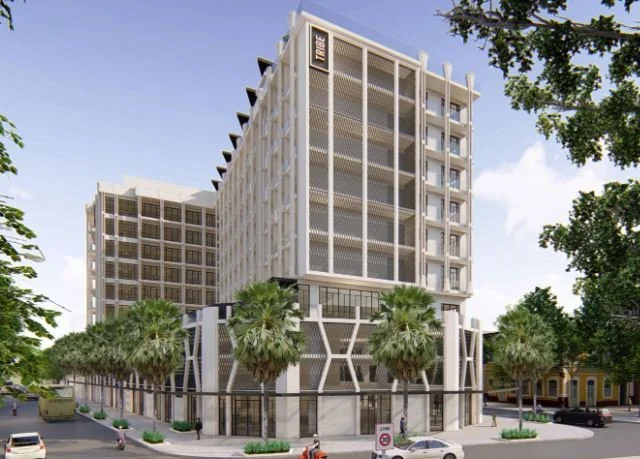
For Kando we worked as strategic design advisors, providing a vision of overall layout, guest experience and key elements of service and presentation. We supported chef advisor Chef Chet Adkins and owner Jason Lang as they coordinated detail work with the local contractors and hotel teams. Their clarity of vision—centered around quality of food and drinks and simplicity of presentation—allows for the design process to flow seamlessly through quick evolution.
Our process focused on understanding and elaborating upon the details from their original restaurant that we know well, as patrons and friends of the restaurant. However, we can hold this particular collaboration up as a model for how we would aspire to work with all our clients: understanding what makes them unique and building concepts and details around those particulars. For Kando, these included features like:
maximizing counter seating so that virtually everyone feels like they are front and center at the omakase experience, even as the venue grew in size
speaking the owner’s dialect: simplicity over flare, letting the people and the food take center stage
remembering the big picture, in this case one that celebrates Jason’s photography work and the team’s love of soulful music played on a great sound system
encouraging the growth of the owner’s brands, with details like the new private dining room…
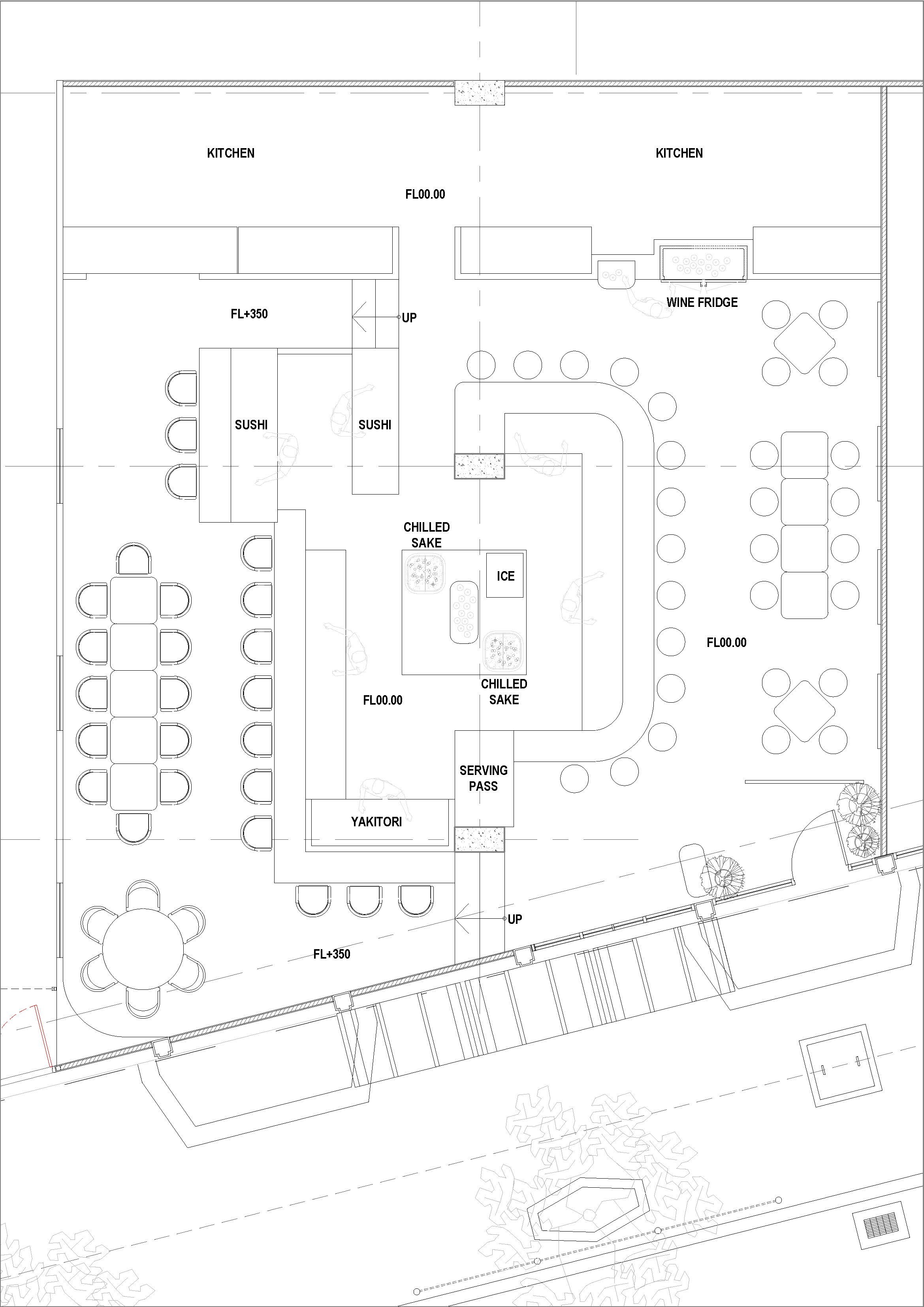



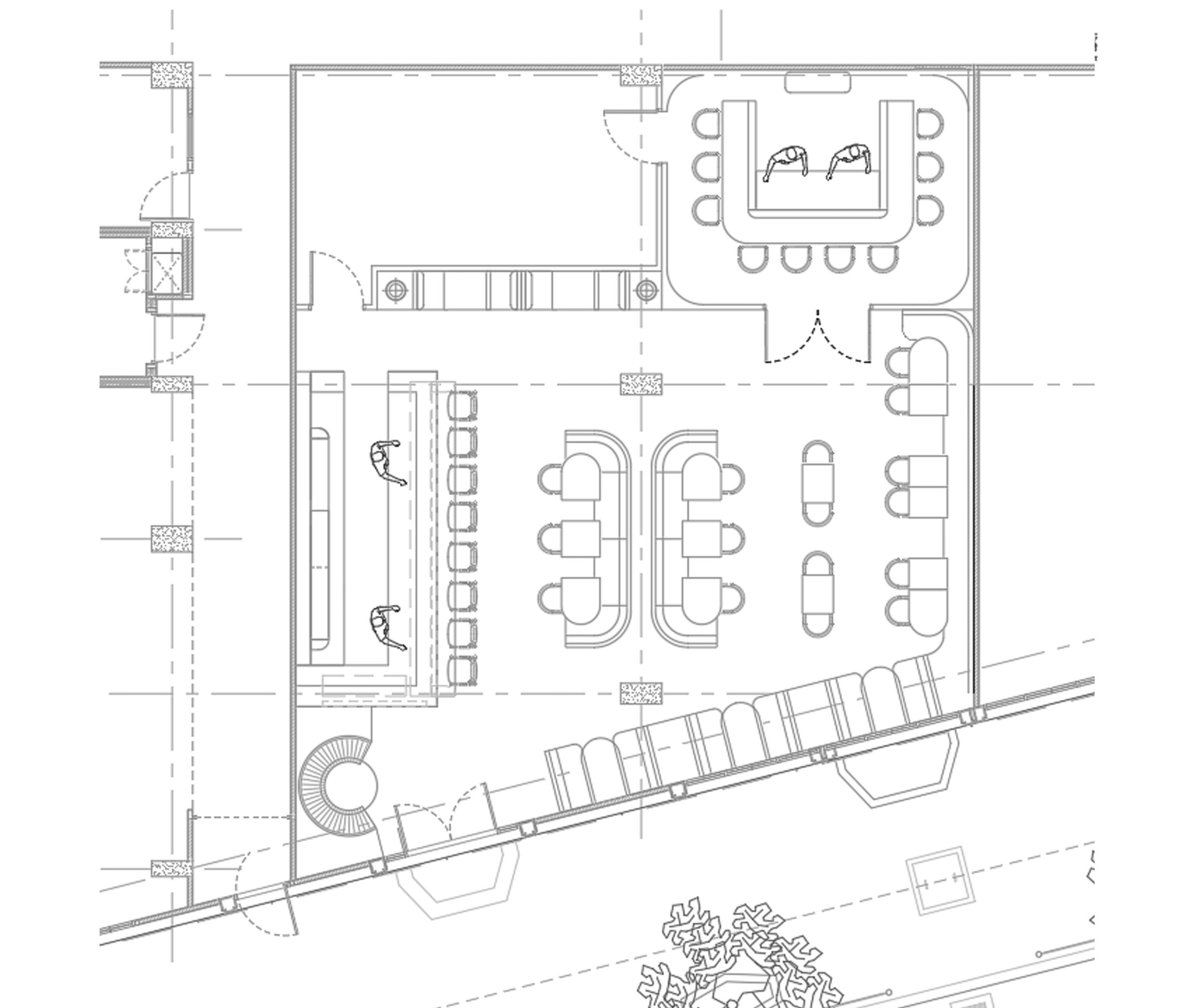
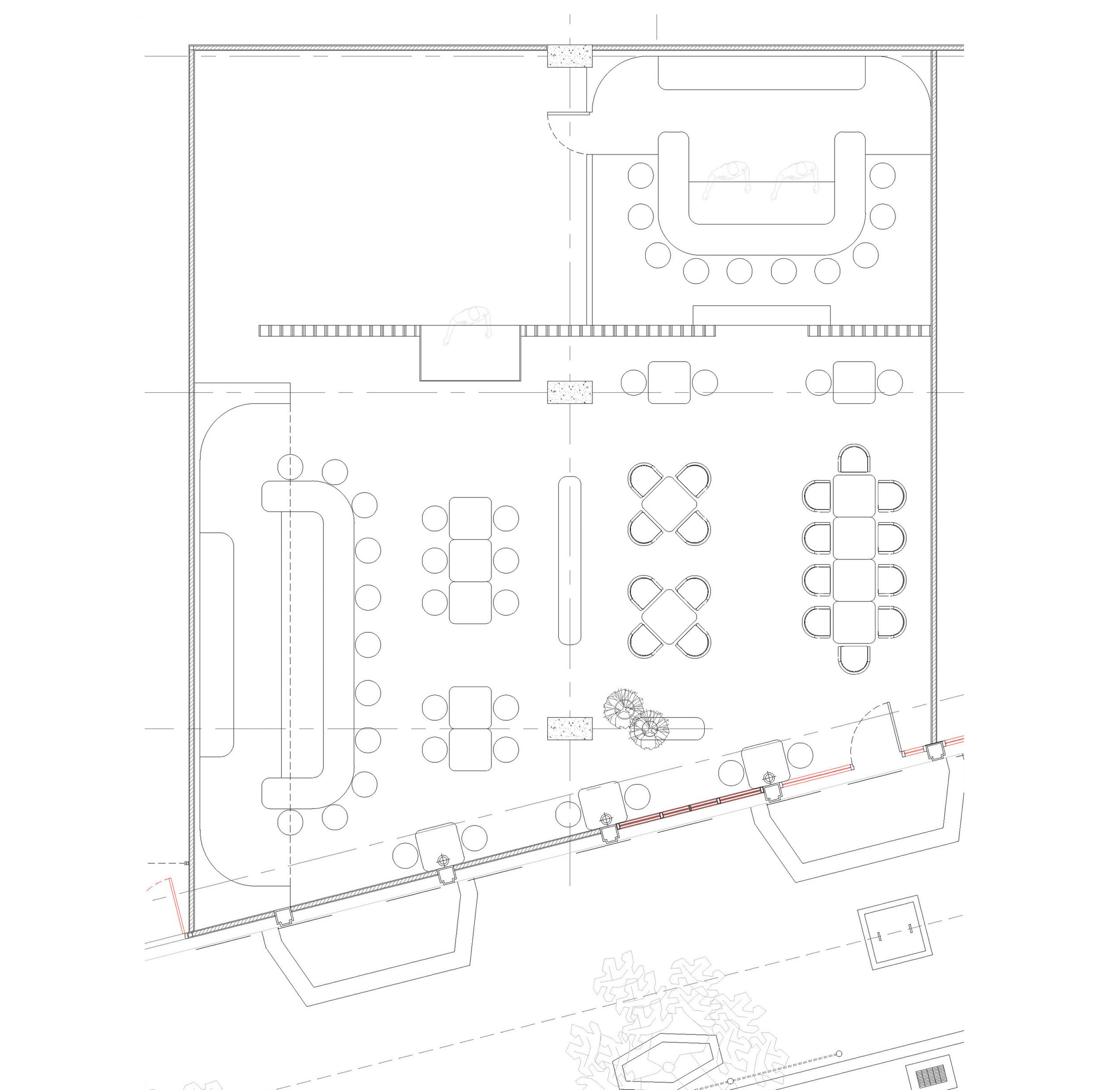
the ‘board room’ private dining — flexible, original, supercool
The team brings decades of experience running their own venues as well as larger destination dining landmarks like Ku De Ta. This depth of expertise means that the Kando signature elements of food, drinks, service and design are well defined—details that grew organically from the personal styles of the owners. Having this strong foundation of operations in place sets the stage for experimentation as well, and this private dining room is a great example. Here we worked with the owners to craft a snug club room with drama and flexibility. Using the traditional noren, a variety of seating, and flip-up table wings, we create a space that’s fit for two small groups or one of up to sixteen guests.
Ready for Battle
When our team sees a plan, it’s more than a seat count or inventory of program. For every corner of every layout we envision the experiences that can unfold with each arrangement of architecture, seating, artwork and piece of equipment, and we share this vision in conversation with the clients. In the case of Kando we started with one idea about the variety of food presentation and the spaces they inspired. Along the way we realized, through several iterations, how the essential setup demanded more counter seating and guest interaction with the food and drink making. This led to the signature “battle station” plan, a multi-sided fortress of action that brings guests into dialogue with the staff on all sides.


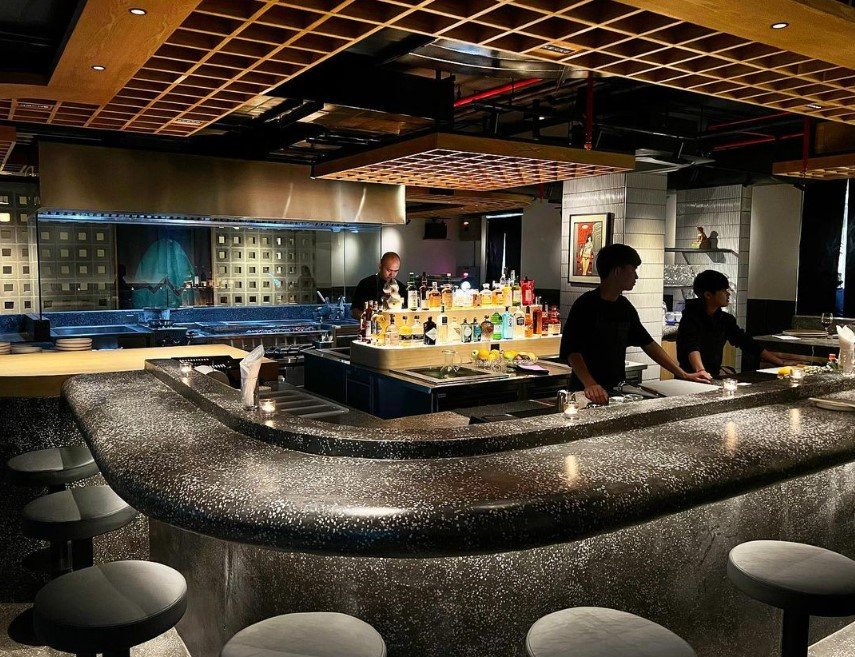
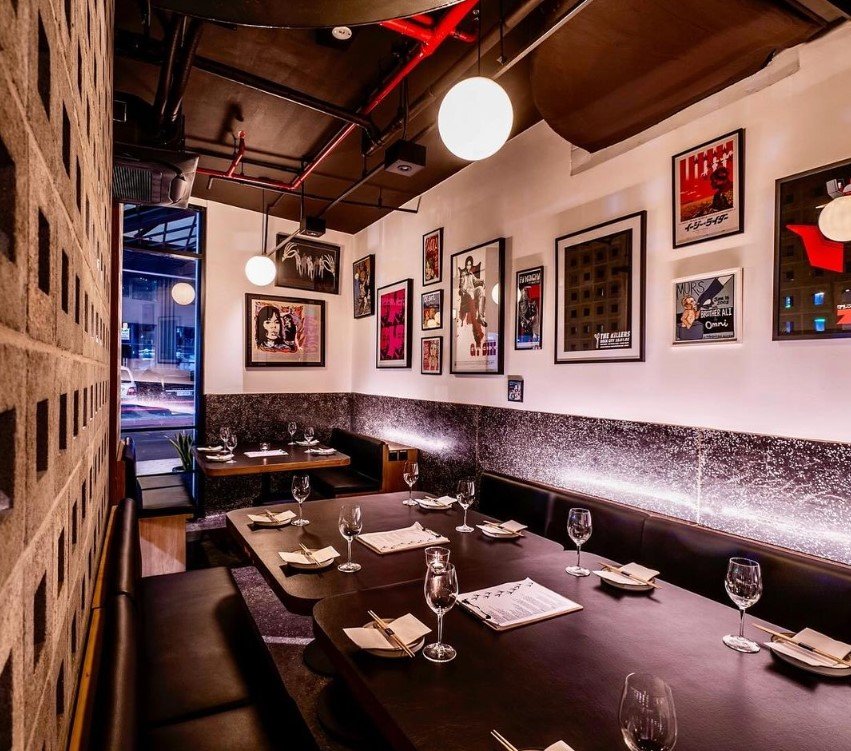
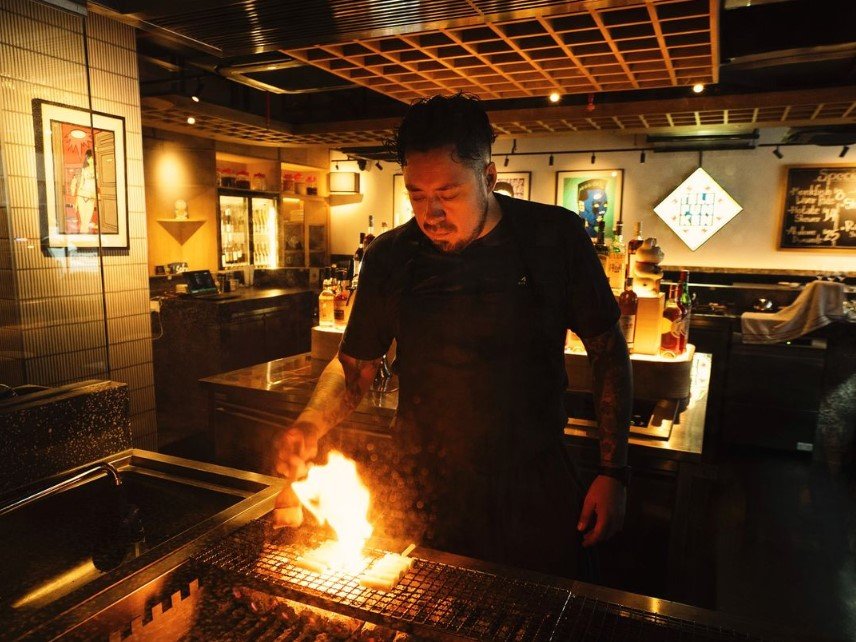
Kando Phnom Penh is a part of the Tribe brand, an Ennismore & Accor hotel with a focus on local culture as expressed in food, events and design. Behind the development of the hotel and the restaurant is HMD Asia, known for such game changing hospitality as Shinta Mani, and responsible for curating this collection of celebrated regional chefs and restaurateurs.
Kando official website
Kando at HMD Asia
An Artist is Born
An ideal scenario for our team on any project, we connected one of our friends and teammates, Hiro Namba, with the Kando crew to explore possibilities for decorative arts. Ideas that Hiro had already begun to develop during the doldrums of the pandemic turned into a new collection of lighting and two-dimensional art that will adorn both JUA Bangkok and parts of the new Phnom Penh space.
Hiro’s caligraphic art on lanterns and paper, on display at JUA izakaya
You can explore more of Hiro’s artwork and the stories of it’s creation on his IG page and in this artist’s statement, prepared for the inaugural exhibition at JUA Bangkok in June of 2022. Hiro’s extensive knowledge of art history, concept narrative and styling contributes to many projects at Atelier Pond.
-
I was born and raised in Japan. I studied for a year in the US in high school and decided to continue my educaiton there. I studied art history in Phiiladelpha and Rome. I studied Romanticsm up to Modernism in Philly and Renaissance and Baroque in Rome. I always worked in the art and design industry of various firleds in Rome, New York, Tokyo, Shanghai, Milan, and most currently in Bangkok. In Bangkok, I directed visual communication for Alexander Lamont.
I went unemployed in the pandemic. I practiced calligraphy everyday during lockdown simply because there was nothing else to do. I woke up early in the morning, cleaned, excercised, mediated and practiced calligraphy everyeday to stay sane. That was my morning routine. I had a huge pile of paper filled with my calligraphy by the time lockdown ended. I never intended or considered it to be art. But Phiillip liked it and you liked it and now I am gving an exhibition out of it!
My journey as an artist started when you requested me to create something abstract that is not Kanji out of calligraphic expression. Calliigraphy essentially is writing so I wasn't sure what I would express without focusing on the characters. I tried many different things and both you and Chet saw the process. In the end I decided to directly use the pile of paper filled with calligraphy I produced in lockdown.
I cut them up into pieces and made collage, which lost the meaning of the text and deconstructed the concept. Traditional calligraphy combines visual essence and interpretation of the literary meaning. My focus on this collection is the beauty of brushwork, which requires years of training, and my mind during lockdown embodied in such brushwork.
Calligraphy is meditation. When you stay focused on ink, paper and your hand, there is a moment when you lose your brain and just feel your breathing. It is a silent conversation with your mind and the brush, which is a beautiful experience. This is how I survived the lockdown.
I started calligraphy even before I spoke words. My grandfather loved ancient Chinese poetry and my uncle was a calligrapher. That was the first form art that I explored. I was never disciplined but somehow I continued it until when I left for the US. I picked it up again while in Shanghai when I met a master. I lost the habit of practicing again but the pandemic brought it back to me.
I am not a calligrapher. I am a visual artist and desginer. Calligraphy is just one of many things I do, but it will continue to be an important source of my artistic expression.
